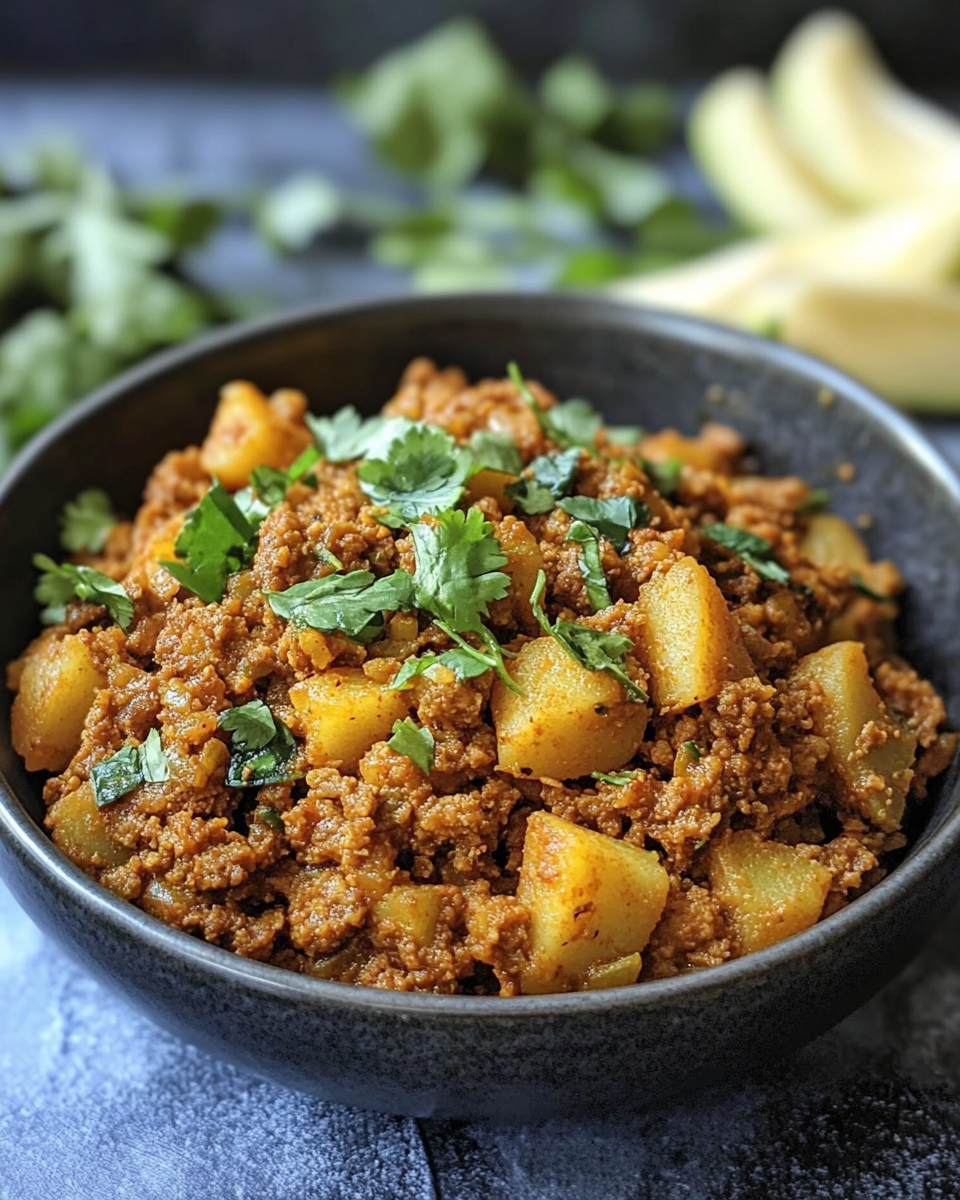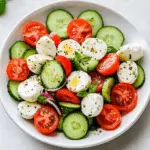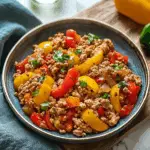The rich aroma of sizzling ground meat mixed with warming spices and tender potatoes is the essence of Aloo Keema — a beloved dish in many South Asian homes. Simple yet satisfying, it’s an everyday meal made with pantry staples that transforms into something truly comforting. This recipe is versatile and easy to prepare, making it ideal for busy weeknights or weekend family dinners. Pair it with fluffy basmati rice, warm roti, or even naan for a full experience. Every bite is a nostalgic journey back to traditional kitchens filled with laughter, love, and the rich scent of home-cooked food.
Full recipe:
Ingredients:
-
500g ground beef or lamb (keema)
-
2 medium potatoes, peeled and diced
-
2 tablespoons cooking oil
-
1 large onion, finely chopped
-
2 medium tomatoes, chopped
-
2 teaspoons ginger-garlic paste
-
1 green chili, chopped (optional)
-
1 teaspoon cumin seeds
-
1 teaspoon ground coriander
-
1/2 teaspoon turmeric powder
-
1 teaspoon red chili powder (adjust to taste)
-
1 teaspoon garam masala
-
Salt to taste
-
Fresh cilantro leaves, chopped for garnish
-
Water as needed
Directions:
-
Heat oil in a deep pan over medium heat. Add cumin seeds and let them splutter.
-
Add chopped onions and sauté until golden brown.
-
Mix in ginger-garlic paste and chopped green chili. Cook for 2-3 minutes until fragrant.
-
Stir in chopped tomatoes and cook until soft and the oil starts to separate.
-
Add coriander, turmeric, red chili powder, and salt. Cook for another minute.
-
Add ground meat and cook on medium-high heat until browned and crumbled.
-
Stir in diced potatoes, mixing well to coat with the spices.
-
Add a splash of water (around 1/4 cup) to help the potatoes cook, then cover and simmer for 15-20 minutes.
-
Once the potatoes are soft and the meat is fully cooked, sprinkle with garam masala and stir well.
-
Garnish with fresh cilantro before serving.
Prep Time: 10 minutes | Cooking Time: 30 minutes | Total Time: 40 minutes
Kcal: 325 kcal | Servings: 4 servings
The History and Origins of Aloo Keema
Aloo Keema, which translates to “potatoes and minced meat,” is a quintessential South Asian dish enjoyed across Pakistan, India, and Bangladesh. Rooted in traditional home-style cooking, this dish is believed to have originated during the Mughal era, where keema (minced meat) dishes were prized for their rich flavors and efficient use of meat. Aloo (potatoes), a relatively modern addition to the South Asian culinary scene post-Columbian exchange, became a staple in regional cuisines due to their affordability, accessibility, and ability to absorb spice.
Over time, Aloo Keema evolved from a royal kitchen delicacy to a beloved comfort food in everyday households. Today, it is served in millions of homes, cooked with slight regional variations, but always delivering the same deeply satisfying taste.
Why Aloo Keema Stands Out
What makes Aloo Keema special is its ability to bring together a few humble ingredients—minced meat, potatoes, onions, and spices—into a dish bursting with complexity. The meat provides protein and richness, while the potatoes soak up the spices and balance the dish with their soft, earthy texture. It’s a perfect balance of hearty and comforting, spicy yet warming, flavorful but not overwhelming.
This dish is also incredibly versatile. It can be made with beef, lamb, mutton, or even chicken. You can prepare it dry to serve with paratha or roti, or slightly saucy for pairing with rice. It’s excellent for meal prep, makes delicious leftovers, and can be repurposed into stuffed parathas, wraps, or even savory pastries.
Health and Nutritional Benefits
Aloo Keema provides a good nutritional profile when prepared with lean ground meat. It’s high in protein, essential for muscle building and maintenance. The inclusion of potatoes adds fiber and important vitamins such as Vitamin C, B6, and potassium.
The blend of spices like turmeric, cumin, and chili powder not only brings flavor but also offers various health benefits. Turmeric is known for its anti-inflammatory properties, while cumin aids digestion. Ginger and garlic, both staples in this recipe, have antioxidant and immune-boosting properties.
When served with a side of vegetables or whole grain roti, it becomes a balanced meal that supports sustained energy, digestion, and satiety.
A Dish That Brings People Together
In South Asian cultures, food is more than sustenance—it’s a way to bring families together. Aloo Keema is often part of weekend dinners, family gatherings, or weekday meals. The process of slow-cooking the keema with onions and spices, watching the potatoes soften, and garnishing it with fresh cilantro is a ritual that evokes warmth and nostalgia.
It’s also a popular dish served during the Islamic month of Ramadan and at Eid festivities, where it’s appreciated for its comforting nature and ease of preparation in large quantities.
Budget-Friendly and Accessible
One of the key reasons for Aloo Keema’s popularity is its affordability. Ground meat is generally more budget-friendly than whole cuts, and potatoes are inexpensive and widely available. This dish delivers gourmet-level satisfaction without straining your wallet, making it ideal for families, students, or anyone looking to cook tasty, economical meals.
Moreover, the ingredient list is highly adaptable to what you already have in your pantry. If you’re short on fresh tomatoes, tomato paste or canned tomatoes work. No fresh green chili? Use chili flakes or hot sauce. The forgiving nature of this recipe makes it beginner-friendly and stress-free.
Perfect for Any Meal of the Day
Aloo Keema isn’t just for lunch or dinner. In South Asia, it’s not uncommon to enjoy this dish for breakfast as well, especially when served with a buttery paratha and a hot cup of chai. It’s comforting, energizing, and satisfying—the kind of meal that gets your day off to a great start.
For dinner, it pairs beautifully with fluffy basmati rice, warm roti, or even freshly baked naan. Its savory richness can even make it the star filling in samosas, buns, or puff pastries for snacks and lunchboxes.
Storage, Meal Prep, and Leftovers
Aloo Keema is a dream come true for meal preppers. It stores well in the refrigerator for up to 3–4 days and freezes beautifully. Reheating brings out even more flavor as the spices continue to deepen over time.
You can double the recipe and enjoy it throughout the week in various forms—plain with rice, stuffed into wraps, or spooned over toasted bread for a desi-style sloppy joe. It’s incredibly versatile and a time-saver for busy schedules.
Tips for the Best Aloo Keema
-
Sear the meat well: Allow the minced meat to brown properly for a richer, deeper flavor.
-
Don’t rush the onions: Browning the onions until golden is essential for building a flavorful base.
-
Use waxy potatoes: These hold their shape better and don’t turn mushy in the curry.
-
Cook covered and on low: This helps the flavors to infuse well and the potatoes to cook evenly without breaking apart.
-
Fresh herbs at the end: A handful of fresh cilantro elevates the dish and adds a burst of freshness.
Regional Variations and Customizations
In Karachi, you may find a drier version with bold spice, perfect for pairing with paratha. In Punjab, the dish is often saucier, enjoyed with basmati rice and yogurt on the side. In India, peas are commonly added to the mix—creating the popular “Keema Matar.”
Vegetarians can enjoy a similar experience by substituting meat with soy granules or minced mushrooms. For a keto-friendly version, skip the potatoes and bulk up the meat with more vegetables like spinach, bell peppers, or cauliflower rice.
Conclusion
Aloo Keema is the kind of recipe that checks every box—quick, nourishing, budget-friendly, and satisfying. It’s ideal for families, singles, and anyone who wants a comforting dish made with simple ingredients and lots of heart. Unlike trendy, complicated recipes that require hard-to-find ingredients, Aloo Keema is timeless. It speaks to generations of tradition and is easily adaptable for modern kitchens. Whether you’re trying it for the first time or recreating a family favorite, this dish has the power to connect people through flavor, memory, and comfort.






